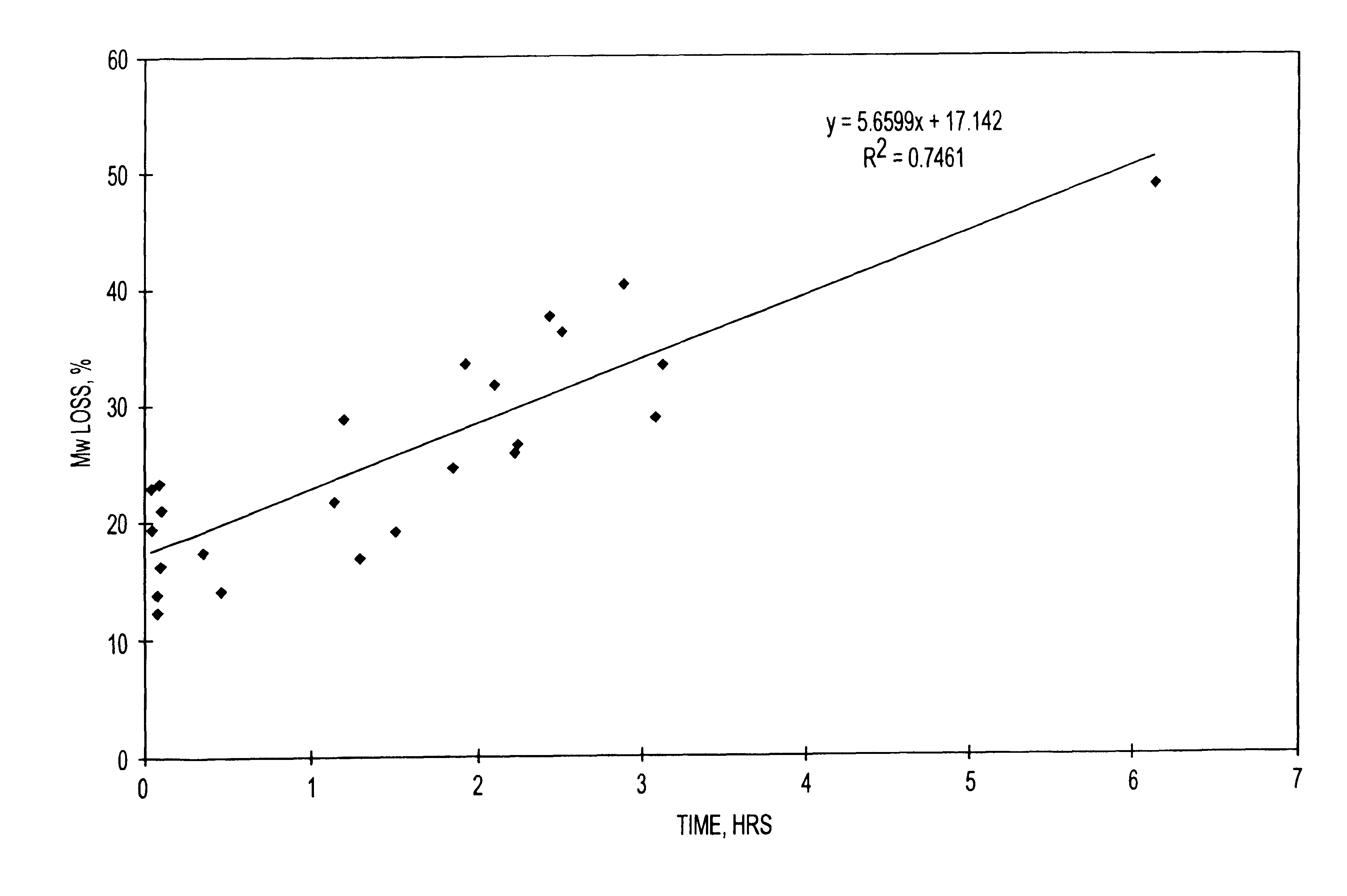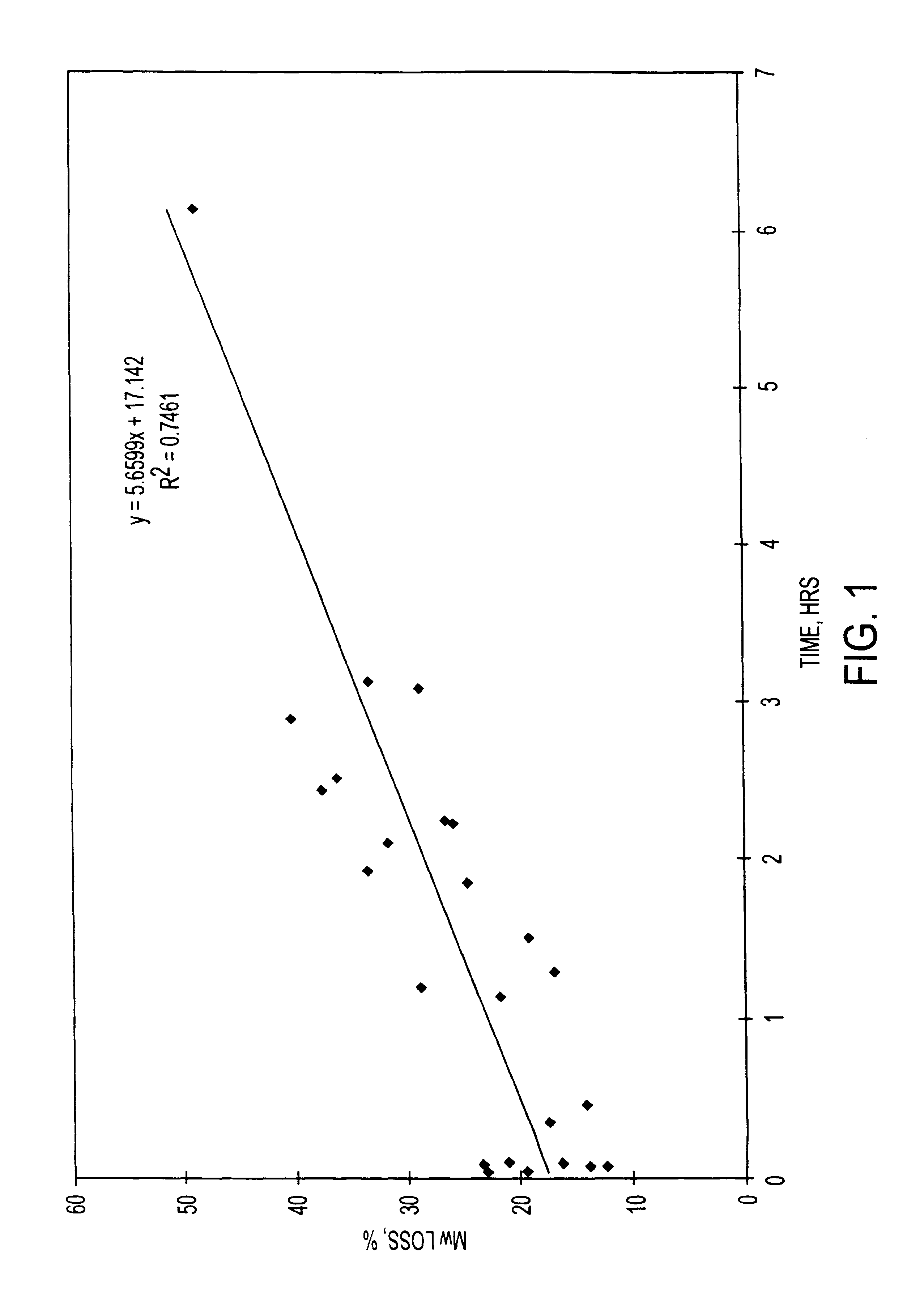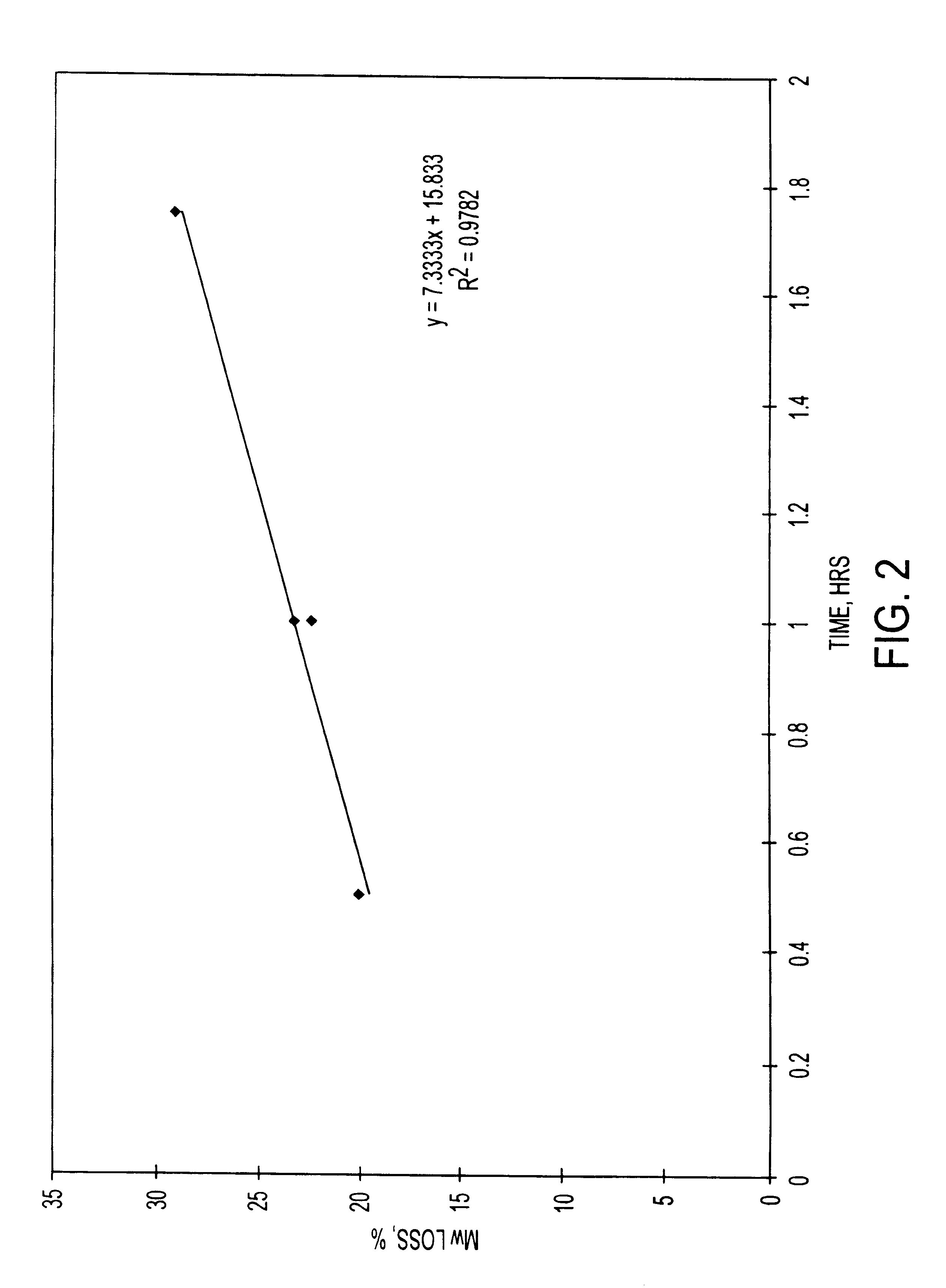Method for preparing microparticles having a selected polymer molecular weight
a polymer molecular weight and microparticle technology, applied in the field of preparation of microparticles, can solve the problem that the moulding article does not provide a method by
- Summary
- Abstract
- Description
- Claims
- Application Information
AI Technical Summary
Benefits of technology
Problems solved by technology
Method used
Image
Examples
example 2
Additional experiments were conducted at the 20 kg scale that also demonstrate the relationship between molecular weight of the finished microparticle product, and the duration of a hold period of a nucleophilic compound / polymer solution. Microparticles comprising risperidone were prepared at the twenty-kilogram scale. The 20 Kg process (8 kg of active agent and 12 kg of polymer) provides a theoretical drug loading of the microparticles of 40% (8 kg / 20 kg.times.100%).
A 16.7 wt. % polymer solution was prepared by dissolving 12 kg of MEDISORB.RTM. 7525 DL polymer (Alkermes, Inc., Blue Ash, Ohio) in ethyl acetate. A 24 wt. % drug solution was prepared by dissolving 8 kg of risperidone (Janssen Pharmaceutica, Beerse, Belgium) in benzyl alcohol. A nucleophilic active agent / polymer solution (organic phase) was prepared by mixing the drug solution into the polymer solution. The active agent / polymer solution was maintained at a temperature of 25.+-.5.degree. C. The active agent / polymer solu...
example 3
The starting molecular weight of the polymer (kD) and the final molecular weight of the polymer in a finished microparticle product (kD) was determined for microparticles containing the nucleophilic compound naltrexone. The starting polymer lactide:glycolide ratio was 75:25, 85:15, and 65:35. The polymers used were MEDISORB.RTM. 7525 DL polymer, MEDISORB.RTM. 8515 DL polymer and MEDISORB.RTM. 6535 DL polymer, all available from Alkermes, Inc., Blue Ash, Ohio.
The naltrexone base microparticles were produced using a co-solvent extraction process. The theoretical batch size was 15 to 20 grams. The polymer was dissolved in ethyl acetate to produce a 16.7% w / w polymer solution. The naltrexone base anhydrous was dissolved in benzyl alcohol to produce a 30.0% w / w solution. In various batches, the amount of drug and polymer used was varied to produce microparticles with different theoretical drug loading ranging from 30%-75%. The ambient polymer and drug solutions were mixed together until ...
example 4
Additional experiments were conducted with other polymers that also demonstrate the relationship between molecular weight of the finished microparticle product, and the duration of a hold period of a nucleophilic compound / polymer solution. Microparticles comprising other polymers having different lactide:glycolide ratios were prepared. Microparticles comprising risperidone using polymers having lactide:glycolide ratios of 65:35, 85:15, and 100:0 were prepared at the 1 Kg scale using the same process described above in Example 1. The polymers used were MEDISORB.RTM. 6535 DL polymer, MEDISORB.RTM. 8515 DL polymer, and MEDISORB.RTM. 100 DL polymer, all to available from Alkermes, Inc., Blue Ash, Ohio.
Table 4 below shows, for each polymer, the starting molecular weight of the polymer (kD), the final molecular weight of the polymer in the finished microparticle product (kD), the percent loss in molecular weight of the polymer, and the hold time (hours) of the active agent / polymer solutio...
PUM
| Property | Measurement | Unit |
|---|---|---|
| hold temperature | aaaaa | aaaaa |
| wt. % | aaaaa | aaaaa |
| time period | aaaaa | aaaaa |
Abstract
Description
Claims
Application Information
 Login to View More
Login to View More - R&D
- Intellectual Property
- Life Sciences
- Materials
- Tech Scout
- Unparalleled Data Quality
- Higher Quality Content
- 60% Fewer Hallucinations
Browse by: Latest US Patents, China's latest patents, Technical Efficacy Thesaurus, Application Domain, Technology Topic, Popular Technical Reports.
© 2025 PatSnap. All rights reserved.Legal|Privacy policy|Modern Slavery Act Transparency Statement|Sitemap|About US| Contact US: help@patsnap.com



